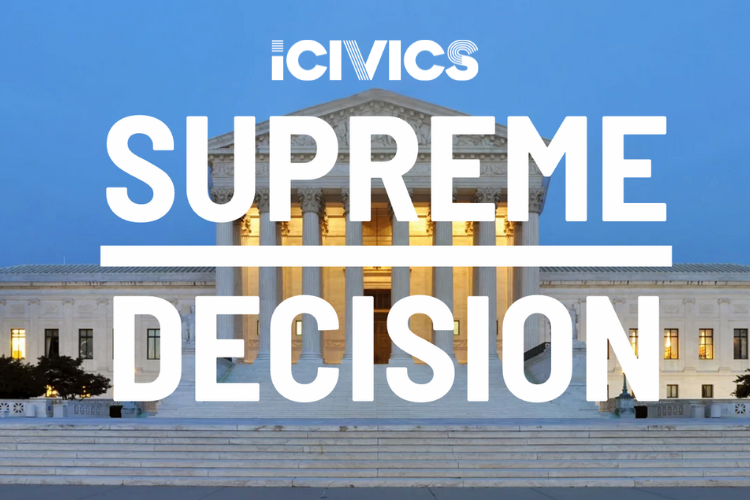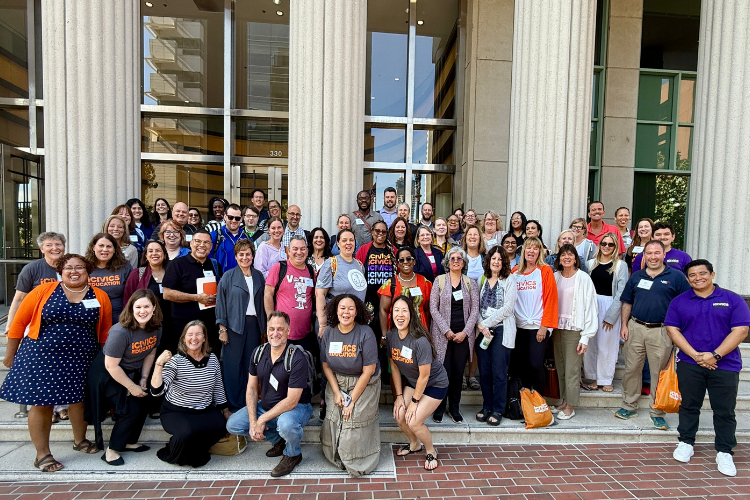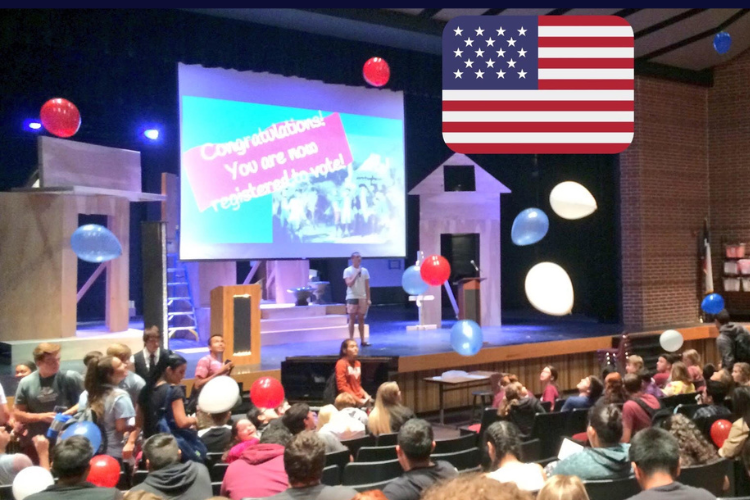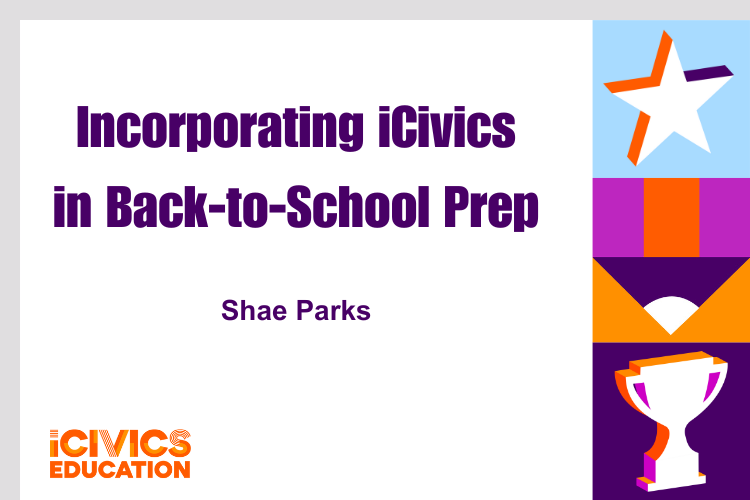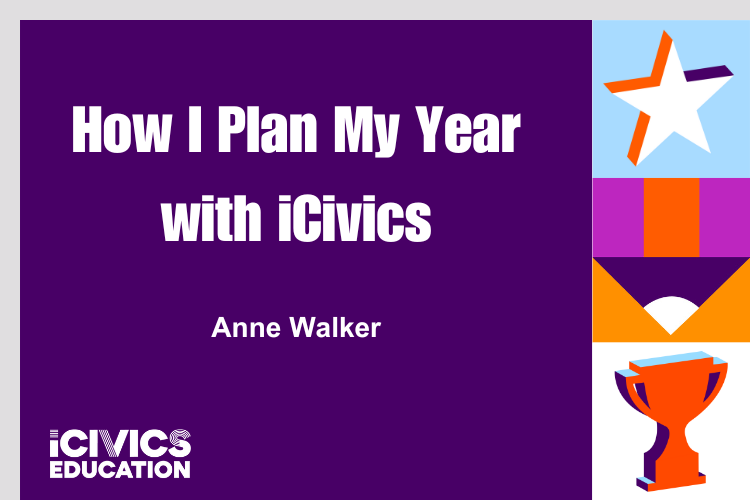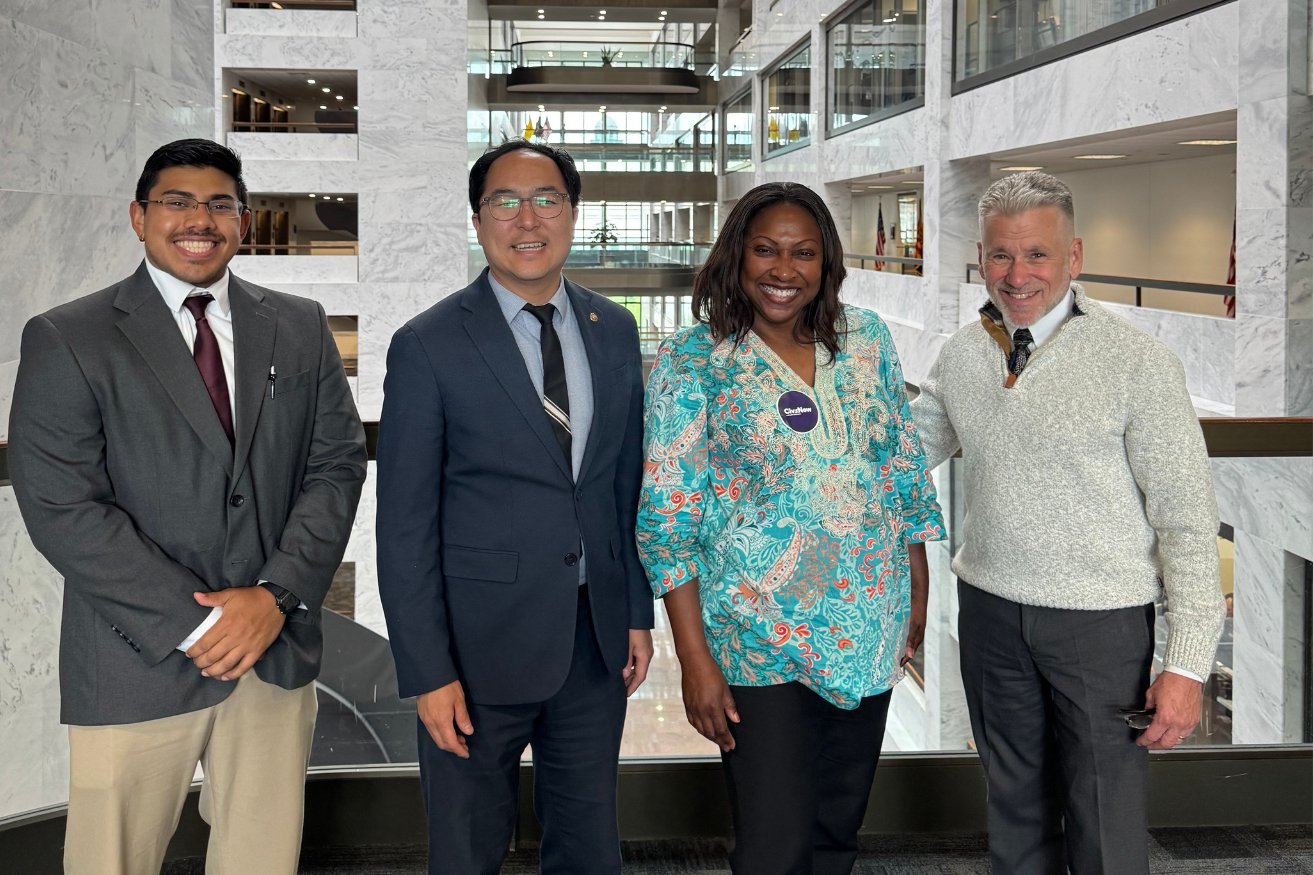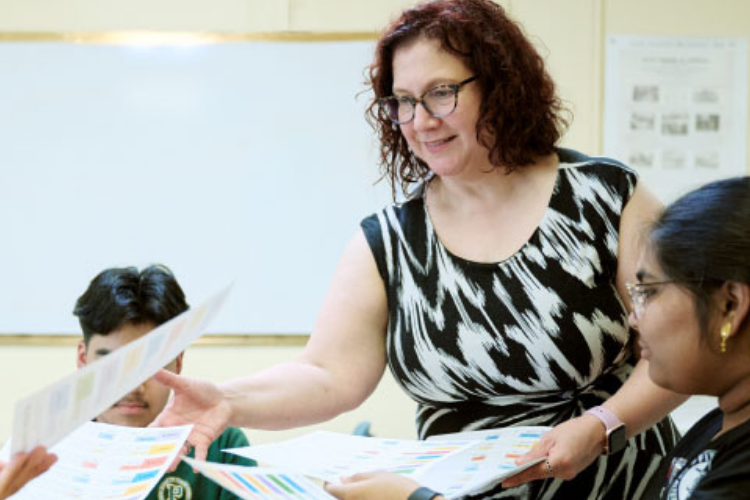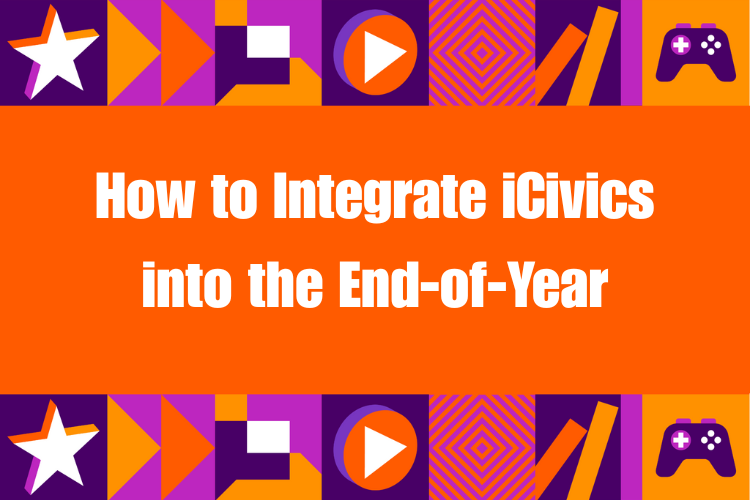The iCivics flagship game, Supreme Decision, helped our students understand the thought process of the Supreme Court justices.

Originally, the game took students through a fictional case of student Ben Brewer, who was suspended for wearing a banned T-shirt to school. Brewer’s lawyers assert that the school limited Ben’s freedom of speech by banning clothing that advertised a controversial band, the Hall of Rejects. (This scenario reminded me of the clothing ban of the band Insane Clown Posse during the ’90s.) Students visited pairs of judges at a time who took the students through different aspects of the court’s decision-making process, including the Tinker v. Des Moines historical precedent, the impact of the court’s decision on the future, interpretation of the Constitution’s language, and analysis of the case’s circumstances.
In playing this game with hundreds of students over the years, the majority never failed to find in favor of Ben’s First Amendment rights, but it’s the discussions that come from the gameplay that varied over the years and make it such a great lesson to carry over each year. Sometimes we talk more in depth about Tinker v. Des Moines; sometimes we debate the current school dress code; sometimes we focus on defining what it means to disrupt the learning environment and who makes that decision; and sometimes students ask to dive deeper into learning about the rights that they keep in school. Over thirty states have banned cell phones during instructional time for the 2025-2026 school year, which should bring another layer of connection to the case.
While the original version of the game went away, iCivics has two updated options that still engage our students with the same ideas today.
One is Argument Wars. In this game, students can choose to play a famous Supreme Court case and hear arguments from both sides.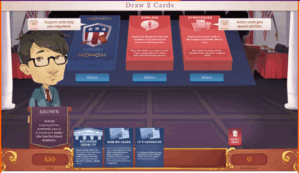 Then they must identify the Constitutional arguments used to support the argument. Once identified, they must build an argument based on Action cards and Support cards. They offer a rebuttal to the opposing side by quickly choosing correct supporting arguments. This game’s strength lies in the variety of gameplay. Not only can you choose between several cases, but you can also choose which side to support and the argument to build. You cannot simply click your way through the game successfully. It takes reading and critical thinking skills to make your way through, but it is not at such a difficulty level that the average student would quit out of frustration.
Then they must identify the Constitutional arguments used to support the argument. Once identified, they must build an argument based on Action cards and Support cards. They offer a rebuttal to the opposing side by quickly choosing correct supporting arguments. This game’s strength lies in the variety of gameplay. Not only can you choose between several cases, but you can also choose which side to support and the argument to build. You cannot simply click your way through the game successfully. It takes reading and critical thinking skills to make your way through, but it is not at such a difficulty level that the average student would quit out of frustration.
The second Supreme Court activity truly brings the iCivics gamification to a new level. I first played the new simulation experience at an NCSS Conference, 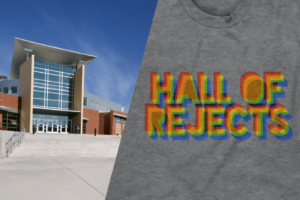 and in the years since, I am continuously surprised by how few people have heard of it! Keeping the name of Supreme Decision, iCivics took the original storyline and developed a truly interactive simulation through the decision-making process. VoxPop is an engagement engine created by Gigantic Mechanic, an internet-based software company that creates “immersive, live-action role plays [where] students explore different perspectives and work together to navigate defining moments in American History.” They currently run six simulations of American history events from Shays’ Rebellion through to the Aids Epidemic of the 1980s. For civics, they have adapted the original Supreme Decision game about student free speech and have also recently added a court case about student due process.
and in the years since, I am continuously surprised by how few people have heard of it! Keeping the name of Supreme Decision, iCivics took the original storyline and developed a truly interactive simulation through the decision-making process. VoxPop is an engagement engine created by Gigantic Mechanic, an internet-based software company that creates “immersive, live-action role plays [where] students explore different perspectives and work together to navigate defining moments in American History.” They currently run six simulations of American history events from Shays’ Rebellion through to the Aids Epidemic of the 1980s. For civics, they have adapted the original Supreme Decision game about student free speech and have also recently added a court case about student due process.
Using this Supreme Decision simulation has been an amazing example of project-based learning, student-led activities, and extension in the classroom. Even my middle schoolers have been able to successfully navigate through the simulations with little help from the teacher, and students have all expressed enthusiasm in the experience. They agree that the work is difficult, but that they understand the topic in the simulation more than they would through the more traditional games. In the History simulations, there is also a video about how the government or company decided in the past, and the students love comparing their results to history. Logistically, this simulation takes between 60-90 minutes to complete, depending on how much time your students will use on their preparation and arguments. With no registration or log in to remember, no student data collected, and no prep required beyond following the prompts on the screen, what do you have to lose? Check out the eight current simulations available on VoxPop, and this year, when you get to your Judicial Branch or Supreme Court unit, carve out a block or two periods to immerse your students and let them make the decisions.
Written by Erin Merrill
Erin Merrill is an award-winning educator in her 19th year of teaching middle school social studies and her 10th year as Department Chair and Middle School lead at Pennington Traditional School in Prince William County, VA. She is passionate about making her students aware and engaged in the current events around them, and thankfully, Civics provides the perfect platform for this.

